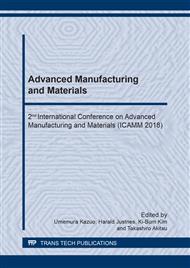p.113
p.120
p.127
p.133
p.141
p.147
p.155
p.163
p.170
Submerged Electrical Arc Discharge for Nanoparticles Fabrication Using Carbon-Based Electrodes
Abstract:
This study describes the structural modifications of char electrodes and the resulting carbon nanoparticles using method of arc discharge in liquid method, an approach which is simpler and less expensive than other techniques such as CVD and laser vaporization. The nanoparticles are obtained from powder floating on the water surface during arc discharge between two electrodes submerged in water. X-ray diffraction analysis (XRD) profiles show peak formation at 24-26o 2Ѳ, associated with hexagonal graphite structure.Transmission electron microscopy (TEM) confirmed the presence of graphitic-structured nanoparticles after arc discharge; these nanoparticles have diameters ranging from 20 to 100 nm. In contrast, nanoparticles produced using graphite electrodes with current source variations show more complicated and varied stuctures, for example, structures such as nanoonions, graphene, and amorphous nanoparticles.
Info:
Periodical:
Pages:
141-146
Citation:
Online since:
November 2018
Authors:
Price:
Сopyright:
© 2018 Trans Tech Publications Ltd. All Rights Reserved
Share:
Citation:


